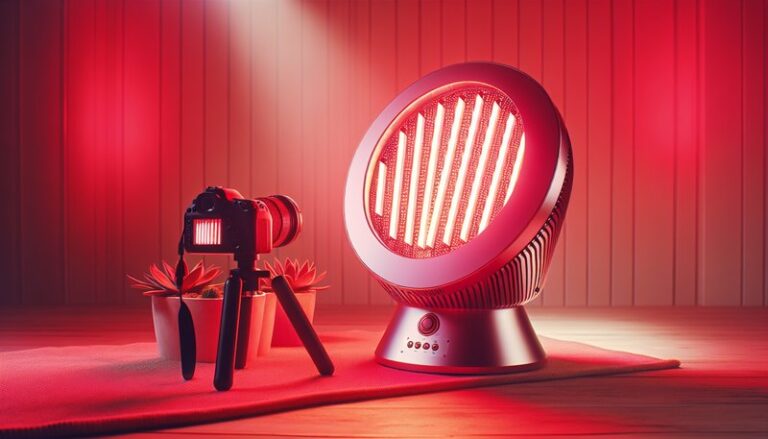Does Red Light Therapy Work For Pain?
Does Red Light Therapy Work For Pain?
Can red light therapy really alleviate pain, or is it just another trend?
This article dives into the effectiveness of red light therapy (RLT) for pain management, exploring its scientific backing, benefits, and alternatives. With the rise in interest surrounding non-invasive pain relief methods, understanding how RLT works and its potential can help individuals make informed health choices.
Key Takeaways
- Red light therapy shows promise for various types of pain relief, including joint pain and muscle soreness.
- Many users report a reduction in pain levels and improved recovery times after RLT sessions.
- While generally safe, it’s essential to consider individual health conditions and consult a healthcare professional before starting RLT.
What is Red Light Therapy?
Red light therapy involves the use of low-level wavelengths of red or near-infrared light to stimulate cellular processes. This therapy harnesses light to penetrate the skin and tissues, promoting biological effects, such as improved circulation and accelerated healing.
Developed in the 1960s, RLT has gained popularity in recent years, particularly in the realms of sports medicine and dermatology. It is now being explored for its pain-relief capabilities as well.
What are the Benefits of Red Light Therapy?
Red light therapy’s potential goes beyond just alleviating chronic pain. The following benefits illustrate how RLT can impact general health and recovery.
Pain Reduction
RLT has been shown to decrease inflammation and enhance healing in conditions like arthritis and sports injuries. For example, a study demonstrated that individuals using RLT had decreased joint inflammation and reported less pain during recovery.
Improved Healing Time
RLT can speed up recovery from injuries. Athletes utilizing RLT have reported faster healing times for muscle strains, providing them with effective help during demanding training periods.
Enhanced Circulation
The therapy encourages increased blood flow, which is crucial for healing. Improved circulation can deliver more oxygen and nutrients to injured areas, thereby reducing recovery time and aiding in pain relief.
Reduced Inflammation
Reducing inflammation through RLT helps alleviate pain symptoms associated with various conditions. This benefit is particularly crucial for those suffering from chronic pain diseases, where inflammation is a primary factor.
Is it Possible to Use Red Light Therapy for Pain Management?
Yes, using red light therapy for pain management is entirely feasible and has been adopted by many individuals looking for alternative solutions to traditional pain relief methods. Many at-home devices are now available, making RLT more accessible than ever.
What are the Advantages of Using Red Light Therapy?
Opting for red light therapy presents several advantages worth considering.
Non-Invasive Treatment
Unlike surgeries for pain relief, RLT is non-invasive, minimizing the risks of complications and recovery associated with surgical procedures.
Few Side Effects
RLT is generally safe, with minimal reported side effects compared to pharmaceuticals. Users often experience no adverse reactions, making it an appealing option for those wary of side effects from over-the-counter pain medications.
What are the Disadvantages of Using Red Light Therapy?
While red light therapy has numerous benefits, it’s essential to consider the potential downsides.
Limited Research
Although promising, the research surrounding RLT for pain relief is still growing. Many studies have small sample sizes, and more rigorous clinical trials are needed for definitive conclusions.
Cost of Equipment
Depending on the type of red light therapy device chosen, the initial investment can be significant, which might deter some users. However, many find that the cost is worth the benefits received.
What are the Things to Consider Before Starting Red Light Therapy?
Before committing to red light therapy, it’s crucial to evaluate several factors:
Consultation with Healthcare Providers
Before starting RLT, it’s vital to discuss with a healthcare provider to ensure it fits within your treatment plan and is appropriate for your health condition.
Device Quality
Invest in high-quality RLT devices with verified efficacy. Researching brands and reading reviews can help avoid ineffective or poorly designed products.
Consistency of Treatment
RLT typically requires consistent use to achieve optimal results. Individuals should be prepared for regular sessions rather than expecting immediate relief after just one treatment.
What are the Alternatives to Red Light Therapy?
If RLT doesn’t feel like the right fit, consider these alternatives for effective pain management.
Physical Therapy
Physical therapy involves a structured program of exercises and movements tailored to reduce pain and improve functionality. It provides personalized care and often produces long-term relief.
Learn the secrets in Can Red Light Therapy Harm You?
Acupuncture
This ancient practice involves inserting fine needles into specific body points to alleviate pain and promote healing. Many find acupuncture beneficial for managing chronic pain conditions.
TENS Therapy
Transcutaneous electrical nerve stimulation (TENS) uses electrical currents to disrupt pain signals sent to the brain. This method is often employed for localized pain relief and is accessible for home use.
Conclusion: Is it Recommended to Use Red Light Therapy for Pain?
Red light therapy presents a promising avenue for pain management with its non-invasive nature and minimal side effects. Though more rigorous research is necessary to solidify its efficacy, many users have reported positive outcomes.
As with any treatment, individual circumstances vary, and consulting with a healthcare professional is recommended before beginning RLT to ensure it aligns with personal health needs and conditions.
Frequently Asked Questions
Does red light therapy hurt?
No, red light therapy is generally pain-free. Many users find the treatment relaxing, with no discomfort during or after the sessions.
How often should I use red light therapy for pain relief?
The frequency of RLT sessions can vary based on individual needs, but a common recommendation is 3-5 times a week for optimal results.
Can red light therapy help with chronic pain conditions?
Yes, many individuals with chronic pain conditions, such as arthritis or fibromyalgia, have reported relief through regular use of red light therapy.
Learn the whole story Doctors’ Opinions on Red Light Therapy
Are there any contraindications for red light therapy?
Individuals with certain medical conditions or those taking specific medications may need to avoid RLT. It’s essential to consult a healthcare provider for personalized advice.
Is at-home red light therapy effective?
At-home red light therapy devices can be effective if properly designed and utilized. Researching product quality and user reviews can guide you in selecting an effective option.






